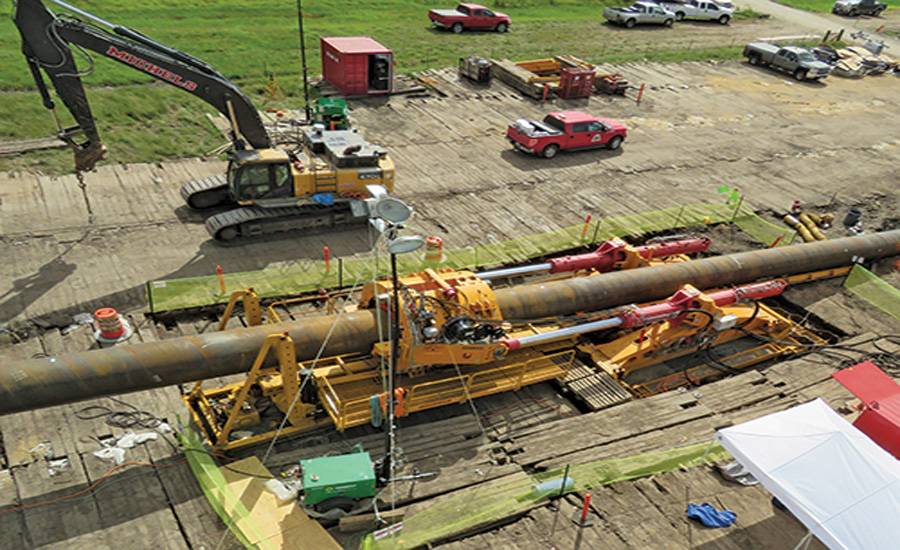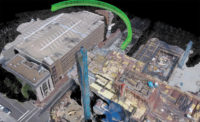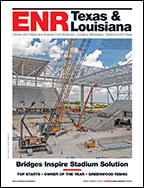The Herrenknecht pipe thruster sent the 48-in. pipeline on a 4,038-ft underground journey.
Working on a trenchless pipeline installation in the crowded subgrade of the busy oil town Freeport, Texas, pipeline contractor Michel Corp. faced a complex route. The pipeline had to pass under roads, rails, a flood-control levee and a barge canal.
Working with lead contractor Troy Construction, Michel opted to step up from its usual horizontal direct-drilling (HDD) and use the relatively new Direct Pipe method. The result was a 4,038-ft installation of 48-in. pipe, which the contractor thinks may be a record for Direct Pipe installations in North America.
"The advantage of Direct Pipe on this job was that it has a continuously supported bore hole— which was a requirement of the U.S. Army Corps of Engineers—as it passed under a levee," says Patrick O'Donoghue, trenchless manager for Michel. The project was originally planned as a 16-in. HDD job, but O'Donaghue said the Corps required a 48-in. casing pipe to be used due to the nearby levee, prompting the switch to the Direct Pipe method.
First introduced in 2007, Direct Pipe was developed by German tunneling-equipment giant Herrenknecht, combining a microtunneling cutterhead up front with a large-diameter pipe thruster in the back. The microtunneling rig pulls the pipe behind it as the thruster jacks the pipe forward, allowing for installation of large-diameter pipeline in varying geologies. Soils are removed via supply lines inside the casing pipe.
The model used on the Freeport job was a Herrenknecht HK750PT pipe thruster. Currently, Herrenknecht's Direct Pipe technology has a maximum recommended drilling distance of 4,921 ft, but O'Donoghue says contractors will continue to push the limits. "It's another extremely useful tool in the toolbox, and its use will continue to increase in the oil-and-gas industry," he says.
Direct Pipe has been used in the U.S. only since 2011, but contractors such as Michel are finding it increasingly helpful on crowded sites. "The alignments can be significantly more shallow than HDD. And it requires a smaller overall footprint as the majority of the work is from one side, making it ideal for urban work," says O'Donoghue.
“This pipeline project is an important piece of our larger Midstream growth program," says Dennis Nuss, spokesperson for the project owner, Phillips 66."We're proud of the great work by our contractors, including Troy and Michels.”
The Freeport pipeline took a few awkward horizontal curves to stay in the approved corridor, but O'Donoghue says operators were able to adapt on the fly. "With any technology, we have to closely monitor it and perform redundant checks to ensure its working properly. But, at the end of the day, it's still a machine that's operated by humans."






Post a comment to this article
Report Abusive Comment